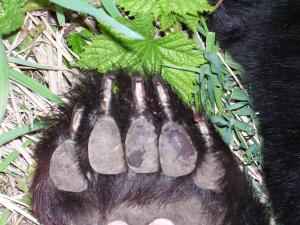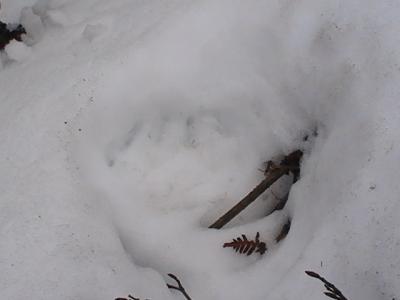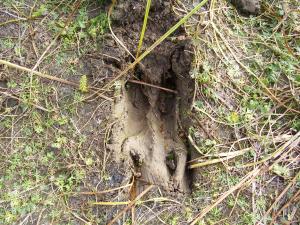How to Identify Animal Tracks
How to Identify Animal Tracks
If you have a passion for hunting animals and would like to pursue it, then learning all about tracking animals before, will actually help you hunt or trap them. You must know how to identify animal tracks of different animals so that you do not end up investing your time tracking unintended game. These skills may also save your life one day.
Animal tracking skill is very important as it not only helps you track the chosen animal, but keeps you safe from predators and dangerous game such as grizzly bear. You get a glimpse of an entirely new world as you excitedly track animals such as raccoons, bears, deer, foxes, skunks, badgers, bobcats, and even mountain lions.
Different animals leave unique prints that can be tracked once you learn to identify their paw prints, scents, and feces or scat. Mentioned below are ways to identify the tracks of different animal tracks.
 Black Bear Paws
Black Bear Paws
Black bear paws feature short claws that do not extend that far from their toe pads and are staggered in a horse shoe like shape. They also have a main palm pad. The picture features a front black bear paw. The hind paws leave print similar to a human foot with claws. When looking at a black bear track you will see small dimple imprints in the ground from the claws.

Grizzly Bear Tracks
Grizzly bear tracks are much larger than black bear tracks. One of the main characteristics is that you will see the claw dimples imprinted a lot further in front of where a black bear’s would be. Instead of having a rounded horse shoe shape they will be straighter. The claws of a grizzly can be 6″ long so they will imprint further away from their pads.
Mule Deer Tracks
Mule deer tracks are curved in the front with 2 parallel hooves and sometimes feature dew claw marks depending on the type of terrain they are in. Smaller does will have a sharper front and bigger bucks will start to have a more rounded and blockier print and will be larger than doe tracks.
 Moose Tracks
Moose Tracks
Moose tracks are very similar to deer tracks except moose tracks are much larger and instead of curving sharply to the front like deer tracks, moose look like parallel imprints with dew prominent dew claw marks. Bull moose will be much larger than cow moose and will appear blockier.
Elk Tracks
Elk tracks are kind of a mix of deer and elk tracks. They are not quite as big as moose tracks but definitely bigger than deer tracks. They do appear rounded and have a curve to the front of the print but not as sharp as deer tracks.
Mountain Lions
Mountain Lions are also called cougars, panthers, or pumas and can be found in Canada and western USA. Their feet have 4 toes that are normally visible in tracks without any claws. Their palm pads usually leave an “M” or trapezoid shaped track along with asymmetrical leading toes. Their front tracks leave a wider and larger print as compared to their hind feet. Mountain Lions usually leave a print of around 2.75 inches to 3.75 inches in diameter.
Wolf Tracks
Wolf tracks are basically like a big dog track.
Foxes
Foxes are mainly trapped for fur and have 4 toes and leave a slightly oval footprint. Their claws are also usually imprinted before each toe although this might not be the case in all situations. Red foxes have small and furry feet as well as toe pads. Red Foxes usually leave a print of between 1.75 inches to 2.5 inches in length and around 1.5 inches to 2 inches in width.
On the other hand the feet of gray foxes are less furry and smaller than those of red foxes. However, their toe pads can be distinctly seen as compared to red foxes. Since gray foxes are able to retract their claws, they may not be visible in all tracks. Gray Foxes usually leave a print of between 1.25 inches to 1.75 inches in length and around 1 inch to 1.75 inches in width.
Raccoons
Raccoon are also trapped, and have tracks that almost look like human hand prints since they feature 5 toes that resemble fingers on all 4 feet. Their hind feet leave a larger print as compared to their front feet, which actually feature longer toes and their foot pads leave “C” shaped tracks. Raccoons usually leave a print of around 2 inches to 3 inches across.
You must learn to identify opossum and river otter tracks in detail since they are quite similar to raccoon tracks. However, while opossums have a larger toe on their hind feet, river otters have webbing on their feet that are usually visible on their tracks.
There are several animals that leave distinct and sometimes confusing tracks and you need to learn all about their tracks in order to correctly identify them. Your hunting adventure will certainly be a lot more thrilling once you learn to correctly identify and track down animals from their tracks.

